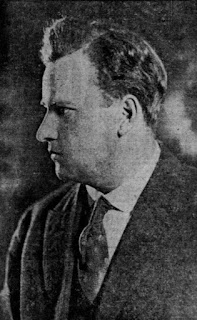His real name was Ugo
Garbaccio. In 1936 he made his debut in concert at the Teatro La Fenice in
Venezia. In 1945 he appeared at the Grattacielo and at the Splendor a San Pier
d'Arena in Genova. I think in Italy he participated only in concerts. Later he
went to France and under the name Ugo Ugaro performed at the provincial opera
houses. His repertoire included Scarpia in ‘’Tosca’’, Rigoletto, Nelusko in
‘’Africana’’, Tonio in ‘’Pagliacci’’, Figaro in ‘’Barbiere di Siviglia’’ and Renato
in ‘’Ballo in maschera’’. After his retirement, he taught singing in Paris and
among his pupils was bass-baritone Michael Vier. He made a few records for
Pacific in Paris.
Chronology of some
appearances
1936 Venezia Teatro
La Fenice Concert
1945 Genova Grattacielo
Concert
1945 Genova Splendor
a San Pier d'Arena Concert






